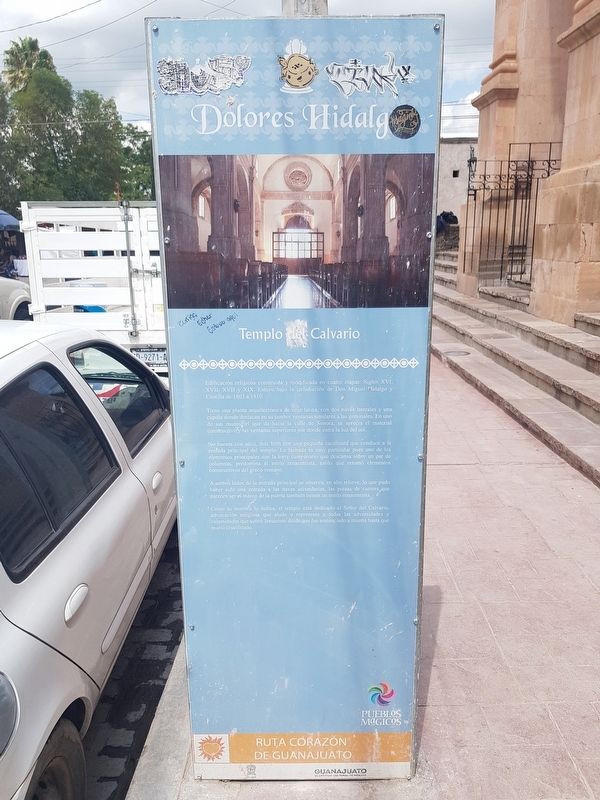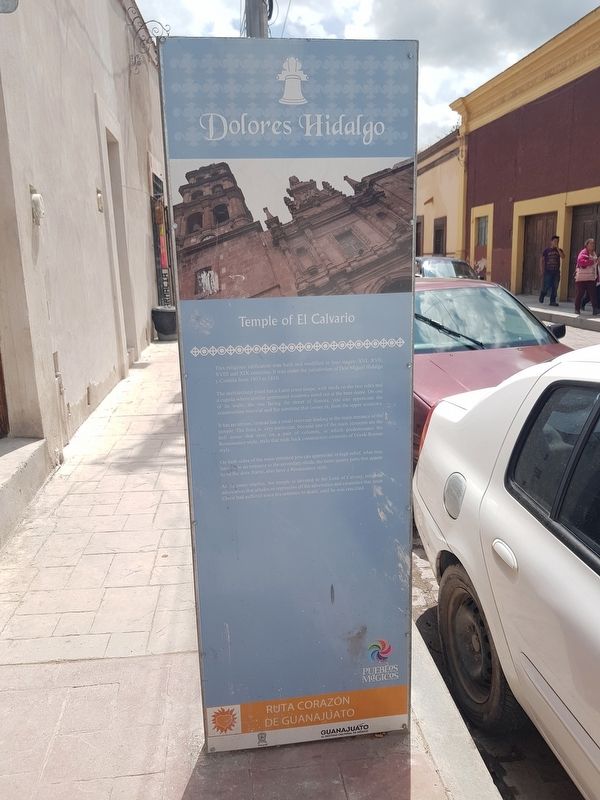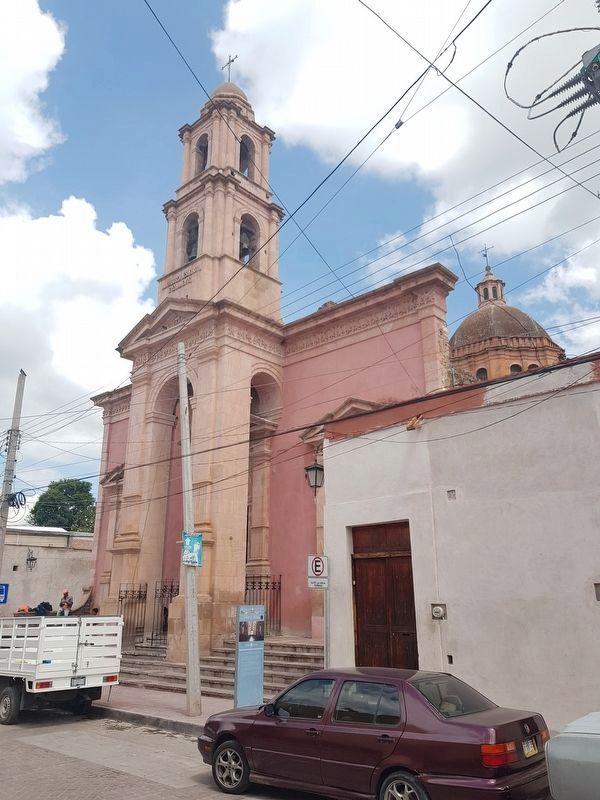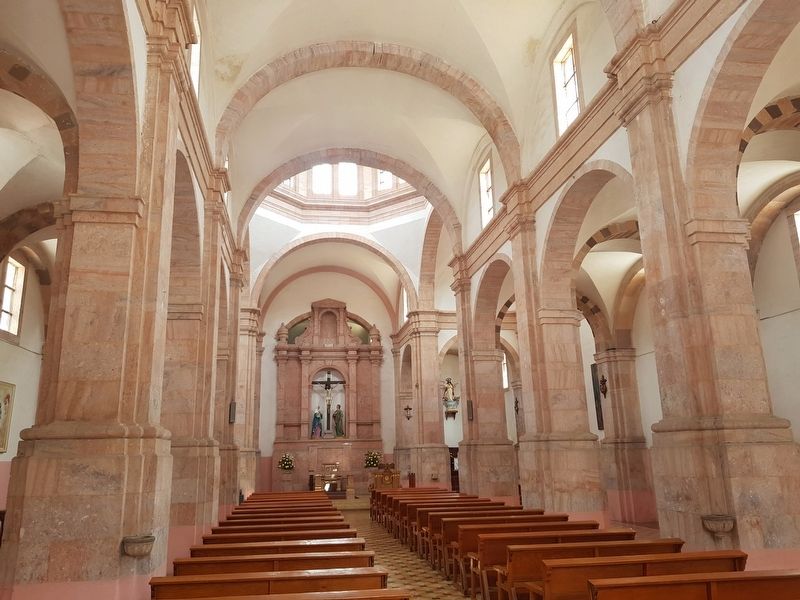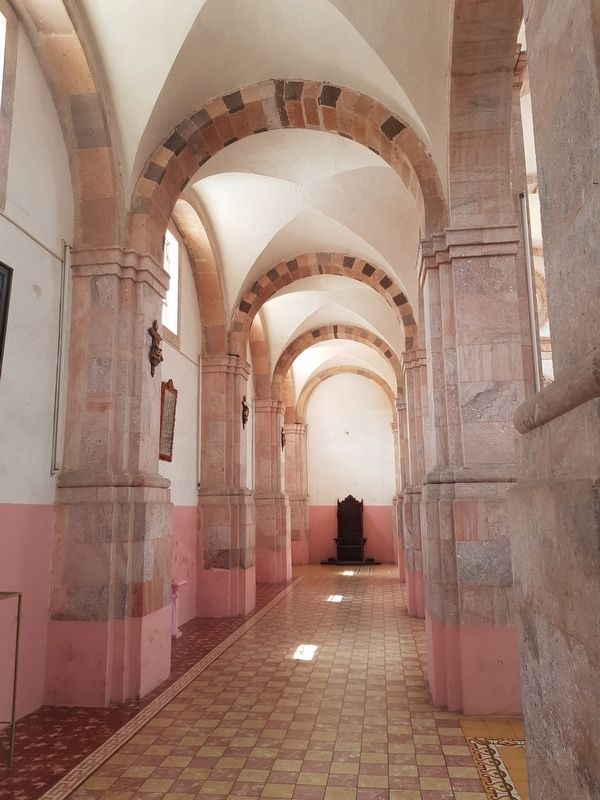Dolores Hidalgo, Guanajuato, Mexico — The Central Highlands (North America)
Temple of El Calvario
Ruta Corazón de Guanajuato
Edificación religiosa construida y modificada en cuatro etapas: Siglos XVI, XVII, XVII y XIX. Estuvo bajo la jurisdicción de Don Miguel Hidalgo y Costilla de 1803 a 1810.
Tiene una planta arquitectónica de cruz latina, con dos naves laterales y una cúpula donde destacan en su tambor ventanas similares a las geminales. En uno de sus muros, el que da hacia la calle de Sonora, se aprecia el material constructivo y las ventanas superiores por donde entra la luz del sol.
No cuenta con atrio, más bien con una pequeña escalinata que conduce a la entrada principal del templo. La fachada es muy particular pues uno de los elementos principales son la torre campanario que descansa sobre un par de columnas, predomina el estilo renacentista, estilo que retomó elementos constructivos del greco-romano.
A ambos lados de la entrada principal se observa, en alto relieve, lo que pudo haber sido una entrada a las naves secundarias, las piezas de cantera que parecen ser el marco de la puerta también tienen un estilo renacentista.
Como su nombre lo indica, el templo está dedicado al Señor del Calvario, advocación religiosa que alude o representa a todas las adversidades y calamidades que sufrió Jesucristo desde que fue sentenciado a muerte hasta que murió crucificado.
Temple of El Calvario
This religious edification was built and modified in four stages: XVI, XVII, XVIII and XIX centuries. It was under the jurisdiction of Don Miguel Hidalgo y Costilla from 1803 to 1810.
The architectural plant has a Latin cross shape, with sheds on the two sides and a cupola where similar geminated windows stand out at the base dome. On one of its walls, the one facing the street of Sonora, you can appreciate the construction material and the sunshine that comes in, from the upper windows.
It has no atrium, instead has a small staircase leading to the main entrance of the temple. The front is very particular, because one of the main elements are the bell tower that rests on a pair of columns, in which predominates the Renaissance style, style that took back constructive elements of Greek-Roman style.
On both sides of the main entrance you can appreciate in high relief, what may have been an entrance to the secondary sheds, the stone quarry parts that appear to be the door frame, also have a Renaissance style.
As its name implies, the temple is devoted to the Lord of Calvary, religious advocation that alludes or represents all the adversities and calamities that Jesus Christ had suffered since his sentence to death, until he was crucified.
Topics. This historical marker is listed in these topic lists: Architecture • Churches & Religion • Colonial Era. A significant historical year for this entry is 1803.
Location. 21° 9.415′ N, 100° 55.893′ W. Marker is in Dolores Hidalgo, Guanajuato. Marker is on Calle Guanajuato just west of Calle Tamaulipas, on the right when traveling west. Touch for map. Marker is in this post office area: Dolores Hidalgo GTO 37800, Mexico. Touch for directions.
Other nearby markers. At least 8 other markers are within walking distance of this marker. Birthplace of José Alfredo Jiménez (about 120 meters away, measured in a direct line); "El Socorrito" Temple (about 210 meters away); Parish of the Asunción (about 210 meters away); Cocomacán (approx. 0.2 kilometers away); Parish of Nuestro Señora de los Dolores (approx. 0.3 kilometers away); Miguel Hidalgo and the First Insurgents (approx. 0.3 kilometers away); From Here Hidalgo Proclaimed Mexican Independence (approx. 0.3 kilometers away); Miguel Hidalgo (approx. 0.3 kilometers away). Touch for a list and map of all markers in Dolores Hidalgo.
Credits. This page was last revised on September 26, 2018. It was originally submitted on September 26, 2018, by J. Makali Bruton of Accra, Ghana. This page has been viewed 123 times since then and 22 times this year. Photos: 1, 2, 3, 4, 5. submitted on September 26, 2018, by J. Makali Bruton of Accra, Ghana.
